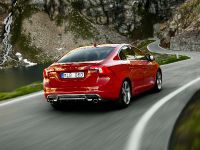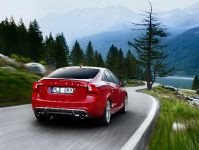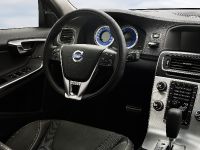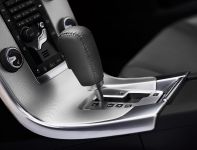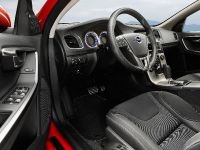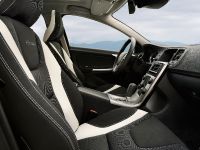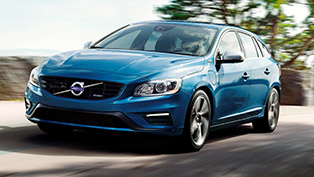Volvo reveals S60 and V60 R-Design versions
Volvo has just announced a sportier, R-Design versions of its higly dynamic models 2011 Volvo S60 and V60. Both rides, the 2011 Volvo S60 R-Design and the 2011 Volvo V60 R-Design are true embodiments of the latest athletic innovations from the Swedish premium automaker.
Stefan Sallqvist, manager of vehicle dynamics at Volvo Cars, shares: "Refining a chassis is a bit like being an athlete looking to break new records. Once you're beaten one record, you're immediately focused on the next. In the R-Design chassis we've sharpened the steering, the agility and the solid overall impression still further compared with the dynamic chassis in the all-new S60 and V60. The driving experience should be so connected and compact that it feels as though the car has been milled out of a single block of aluminium."
To add even more dynamics without compromising the driving experience, the chassis experts at Volvo have quipped the new R-Design rides with what is known as a strut brace under the bonnet, which is actually a bar that ties together the suspension strut towers, a classic approach of stiffening up the body structure.
Stefan Sallqvist further explains: "The car now has a more solid feel to it, which in turn helps make the steering feel even more responsive with a distinctive contact with the road."
The key elements of the new R-Design Volvo additions, include: monotube dampers at the rear, 15 mm shorter and 15 per cent stiffer front and rear springs, 20 per cent stiffer bushings, as well as a new Corner Traction Control unit, which utilizes torque vectoring for smoother cornering and further boasts a DSTC anti-spin system.
DSTC (Dynamic Stability and Traction Control) system:
- Advanced Stability Control. With a new gyroscopic roll-angle sensor it is possible to identify any skidding tendency at a very early stage. This means that the anti-spin system can deploy faster and with greater precision. Advanced Stability Control provides a huge improvement in driving properties and in emergency avoidance manoeuvres during dynamic driving involving considerable lateral forces.
- Engine Drag Control. Prevents the wheels from losing their grip during engine braking on a slippery surface.
- The DSTC system also has a sports setting that makes it possible for the driver to drive more actively. By disabling the anti-spin function, the car allows more pronounced oversteer.
Engine range:
|
Petrol engines |
Displacement |
Configuration |
Output |
Torque |
|
T6 |
3.0 |
6-cyl in-line |
304 bhp |
440 Nm |
|
2.0T |
2.0 |
4-cyl in-line |
203 bhp |
300 Nm |
|
T5 |
2.0 |
4-cyl in-line |
240 bhp |
320 Nm |
|
T4 |
1.6 |
4 cyl in-line |
180 bhp |
240 Nm |
|
T3 |
1.6 |
4-cyl in-line |
150 bhp |
240 Nm |
|
|
|
|
|
|
|
Diesel engines |
Displacement |
Configuration |
Output |
Torque |
|
D5 |
2.4 |
5-cyl in-line |
205 bhp |
420 Nm |
|
D3 |
2.0 |
5-cyl in-line |
163 bhp |
400 Nm |
|
1.6 D DRIVe |
1.6 |
4-cyl in-line |
115 bhp |
270 Nm |

